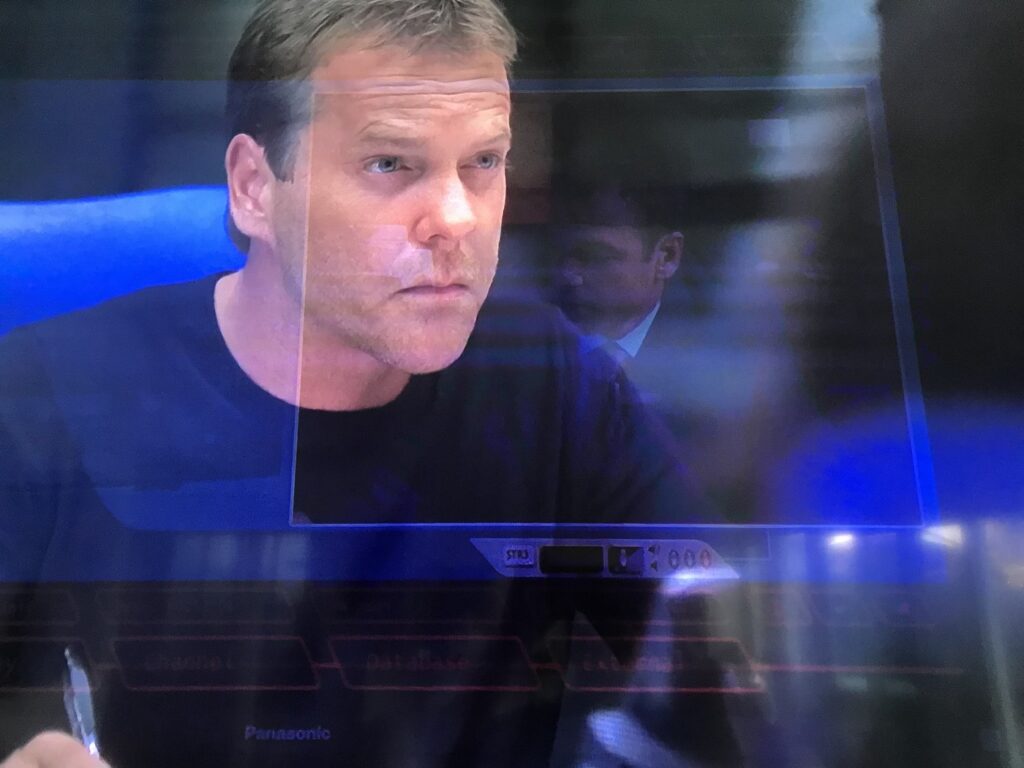Will the energy crisis in Europe lead to a renaissance of common sense?
In series 4 of the hit series ‘24’, one of the more outrageous subplots was where the main antagonist; a Turkish terrorist named Habib Marwan, facilitated a train crash to steal the ‘Dobson Override’. This fictitious device could be used to melt down all 104 US nuclear reactors.
24 series 4 went to air in 2005. What is alarming is that the US only has 93 operating nuclear reactors. The evil terrorist and Dobson Override do not exist, but something else is killing our reactors.
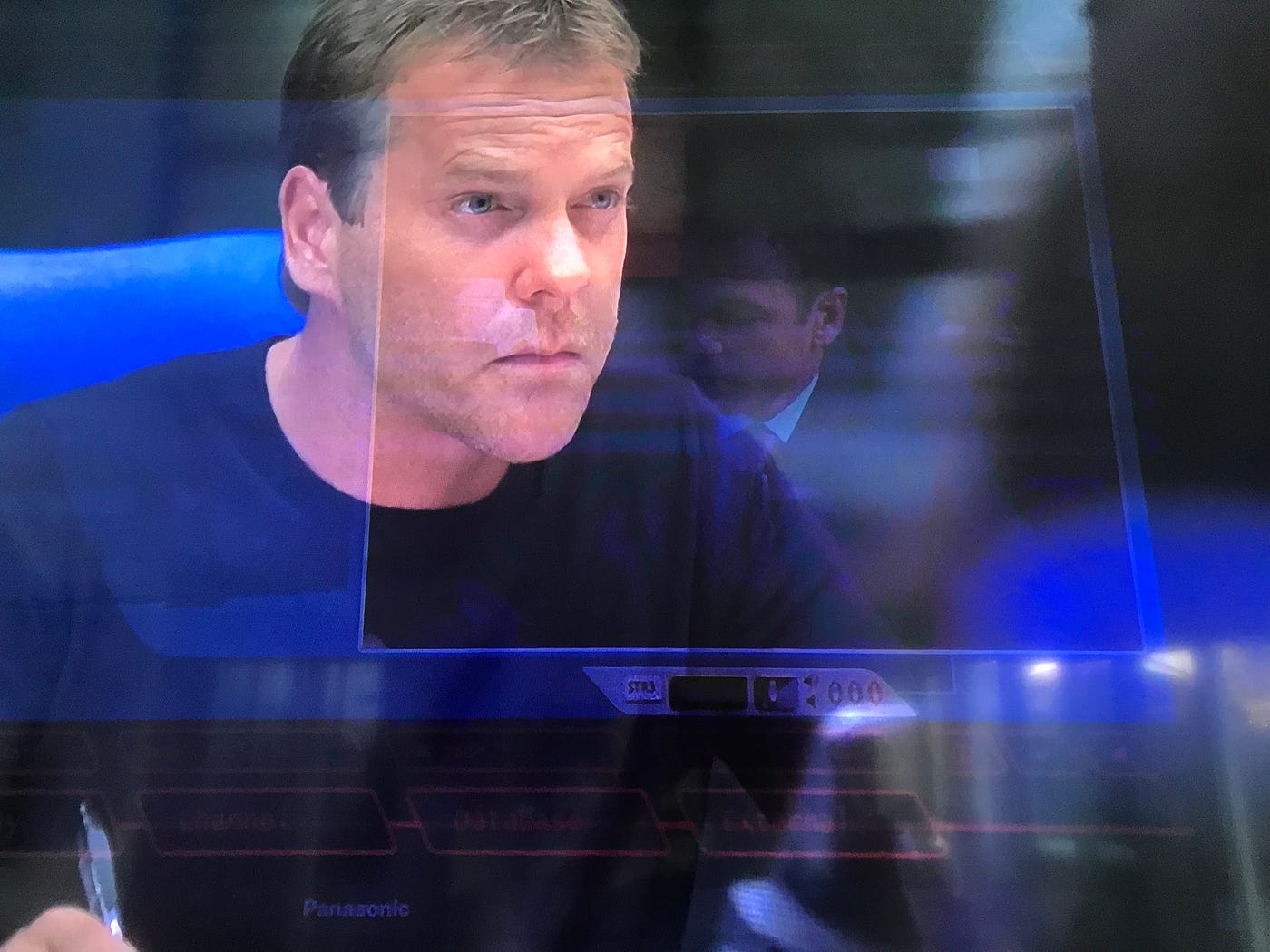
The tide might be turning, with two plants in northern Illinois recently spared from closing early due to the introduction of a state government clean energy bill supporting carbon-free energy resources. “It became apparent to folks that you can’t, at the end of the day, cost-effectively reach 100% clean energy if existing nuclear plants close prematurely” — David Kolata, Citizens Utility Board.
Even Jack Darin, a member of the staunchly anti-nuclear Sierra Club was able to articulate the challenge with closing operating nuclear reactors: “if the nuclear power plants were retired now, renewables wouldn’t be ready in time to take their place”. New York’s Indian Point nuclear power plant closed after 59 years of operation in May 2021 and carbon emissions subsequently increased, underscoring this point.
In a further sign of hope for existing clean nuclear energy, former partner of Tesla CEO Elon Musk, Grimes recently stated; “California is in an energy and climate crisis, and closing Diablo Canyon will make us reliant on fossil fuels”. Elon Musk himself posted a tweet that went viral suggesting that nuclear plants should not be shut down — unless susceptible to extreme natural disasters. Jack Dorsey, former CEO of Twitter also recently posted to his 6.1 million followers on Twitter:
These heavy-weight celebrities/tech entrepreneurs echo the sentiment that perennially frustrated pro-nuclear energy analysts have been communicating for many years.
The energy crisis in Europe is creating what I like to call a renaissance of common sense. More countries are discussing or planning to build new reactors, notably the Netherlands, UK, Slovenia, Poland and France as energy independence comes back into vogue. Ukraine is heavily reliant on nuclear energy and is looking to the West for fuel, technology and investment in its nuclear plants to reduce dependence from Russia. Similarly, in Poland, a large majority of 82% said that building nuclear power plants would be a good way to increase Poland’s energy security in recent opinion polling.
A level of overconfidence exists in our ability to transition to 100% renewable energy. Germany and California provide good examples of just how challenging decarbonising the electricity sector will be. Below is a visualisation showing electricity sector emissions in California over a period of 11 years.
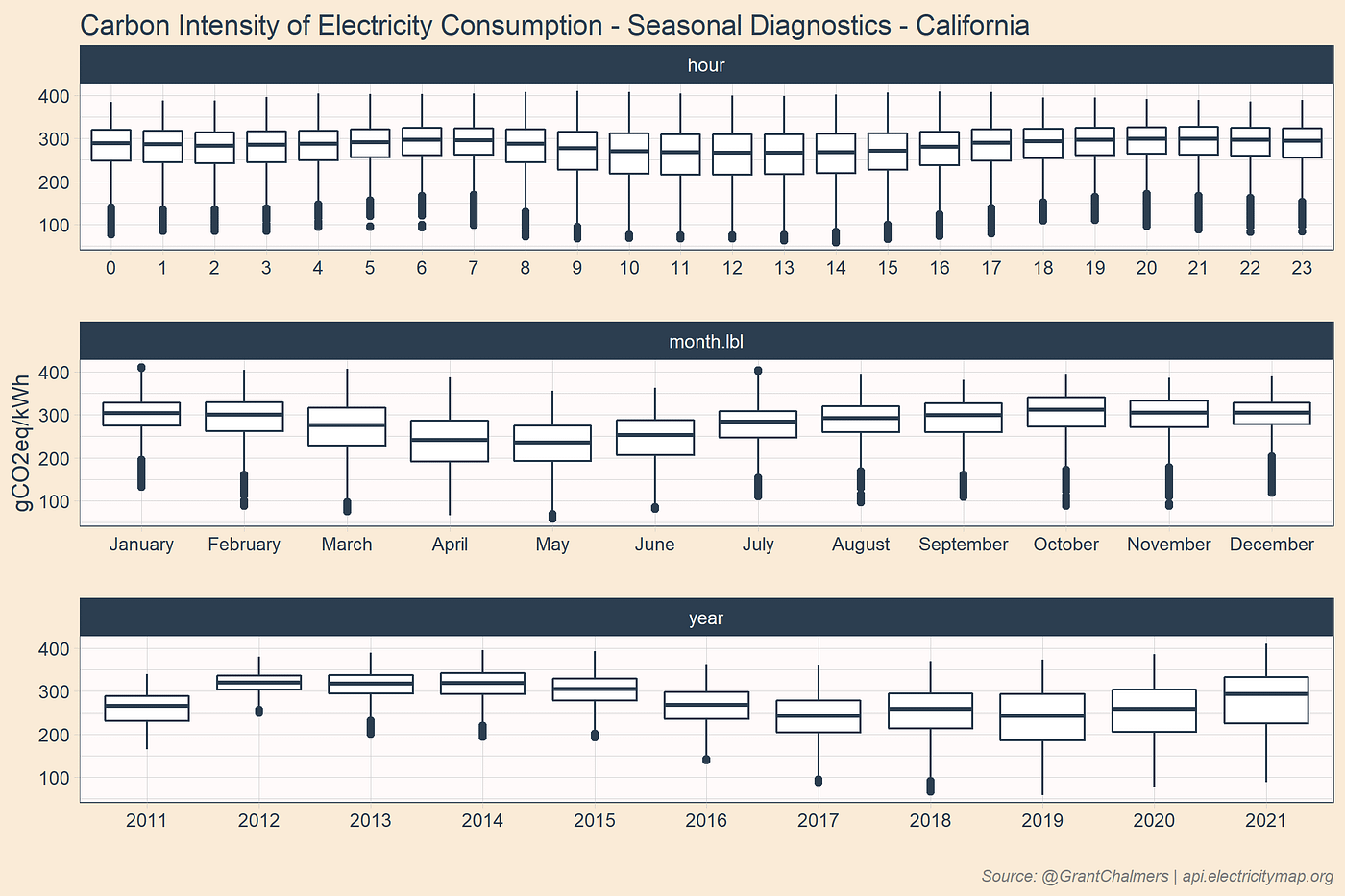
Ongoing drought in California means usually dependable hydroelectric power ouput has been lower than usual. The iconic 2-GW Hoover Dam is operating at substantially reduced capacity with the majority of energy going to Southern California. This highlights the dangers of becoming over-reliant on weather dependent electricity generation, especially in the face of climate change.
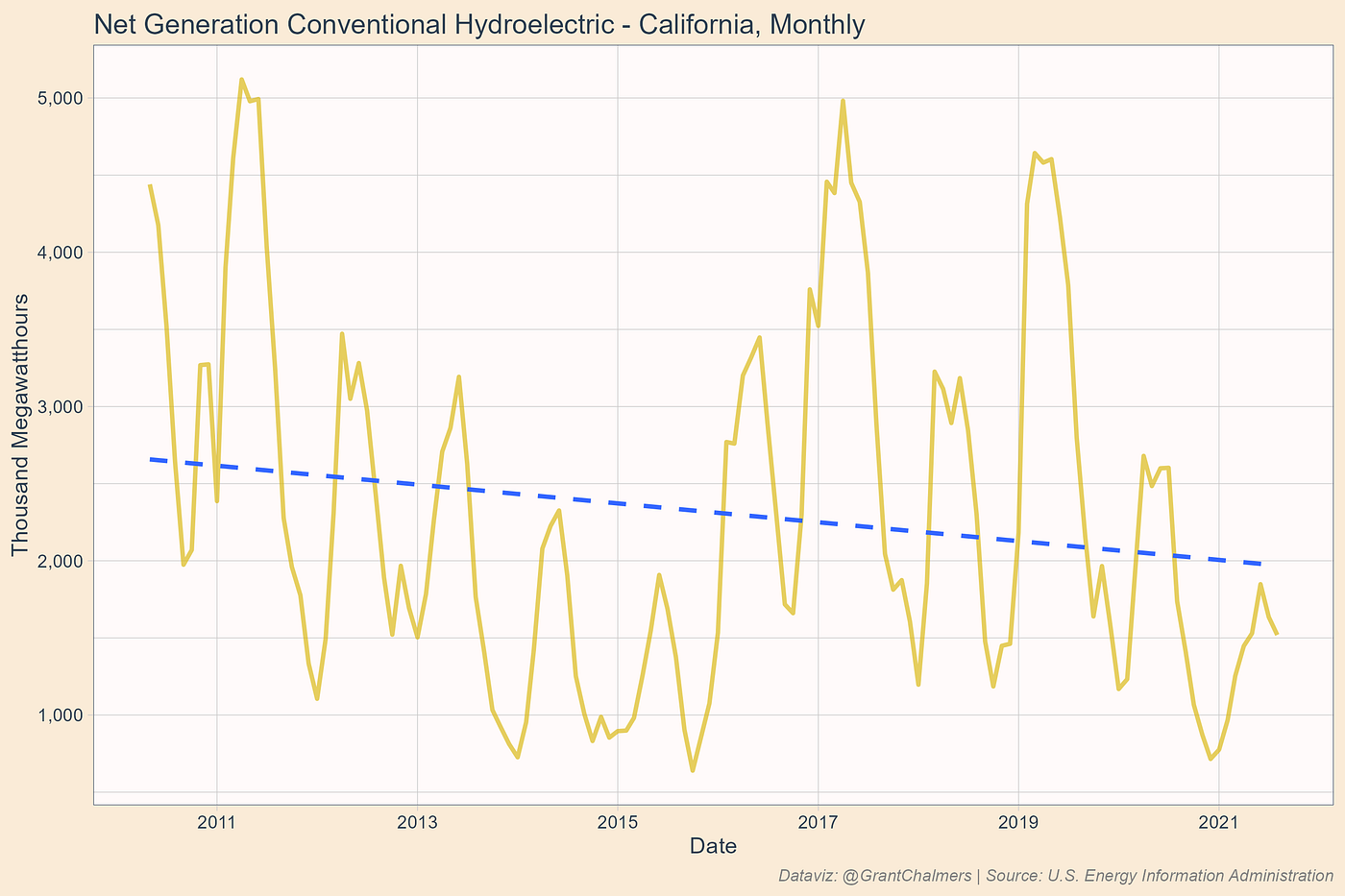
Meanwhile, California is planning to shut down their last remaining nuclear plant (Diablo Canyon) in 2024, so a change to this trend is unlikely to come anytime soon. Keep in mind that Diablo’s closure means new gas plants are required to back up the intermittent nature of wind and solar and to avoid blackouts, according to this Bloomberg piece.
Mechanical engineer turned finance investment guru, Lyn Alden states, “They’re betting on being able to phase out prior energy sources and to reduce the power density of our primary energy sources, for the first time in human history, as though it’s a given”. For further context, read this thought-provoking piece around the difficulty of moving away from hydrocarbons.
The below tweet highlights the difficulty of climbing down the energy density ladder in relation to primary energy.
The story is similar for electricity generation in the tweet below, where some of the good work from the renewable energy roll-out has been unravelled by the political closure of nuclear plants.
Back in Europe, Germany and Belgium are planning to close their existing reactors. The Germans have closed their Grohnde, Gundremmingen C and Brokdorf plants as part of their nuclear phaseout, leaving only three remaining plants.
Germany has a slow-motion version of the Dobson Override known as Energiewende.
As mentioned earlier, the German nuclear closures couldn’t have come at a worse time with the current Europe-wide energy supply crunch. I intend to visualize the increased emissions, as a result, thanks to ElectricityMap data. Feel free to follow me on Twitter here.
One day after Germany closed half their remaining nuclear capacity, China connected its Hualong One technology third-generation reactor to the power grid in southeast China’s Fujian Province after 6 years of construction.
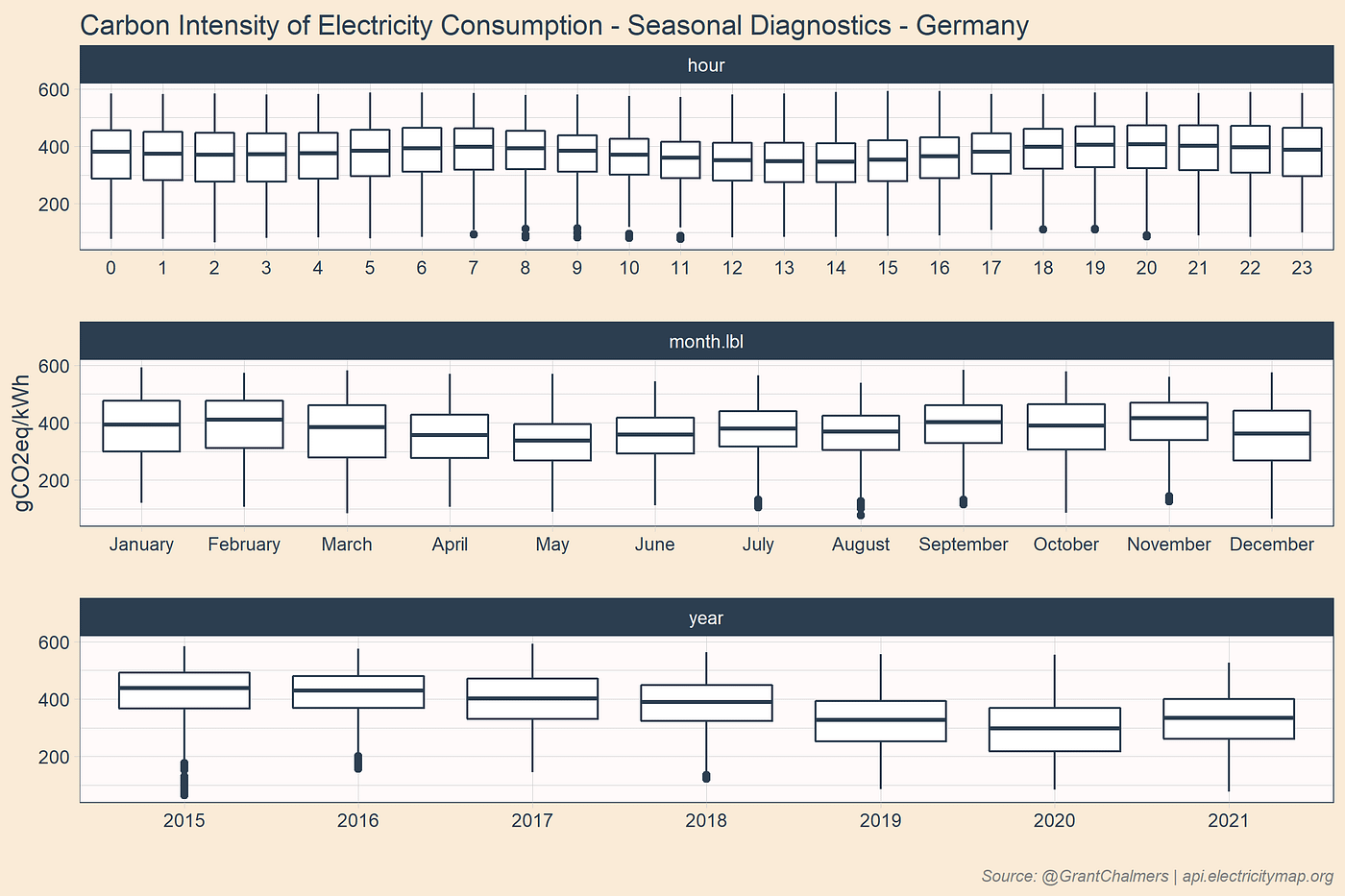
The below density ridge plot provides an overview of the carbon intensity of carbon dioxide in 2021 (grids ordered by overall median). It is abundantly clear that hydro and nuclear dominate the consistently low-carbon grids.

Let’s hope that one day a 100% renewable grid for an industrialized sized economy can replicate this, however, the environmental footprint of achieving this must be considered. A 100% renewable energy grid, including large-scale storage and associated transmission infrastructure has significant implications for land usage intensity and mining of metals, including copper, zinc, nickel, cobalt, lithium, graphite, and rare earth elements.
Rio Tinto’s Jadar project in Serbia is one of the largest greenfield lithium projects in the world, however, their mining license was just revoked — the Serbian government caved in due to large-scale environmental protests.
A recent UN report found that nuclear energy has the lowest lifecycle GHG emissions of all electricity generation sources surveyed. This provides more evidence that serious scientific and international organizations see nuclear power as a sustainable source of energy.
The West needs to find a way to maintain existing nuclear power and build more — a type of Dobson Override that features a reverse button. We need continued positive advocacy. Refreshingly, new nuclear energy influencers like Isabelle Boemeke are pushing back on the green movement’s increasingly stale, decades-old demonization of clean (nuclear) energy. The economics of nuclear energy are workable when looking from a whole-of-system perspective, over the long term — sadly a concept that is difficult to realize under Western short-termism driven by election cycles.


